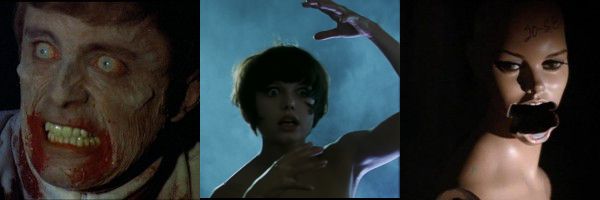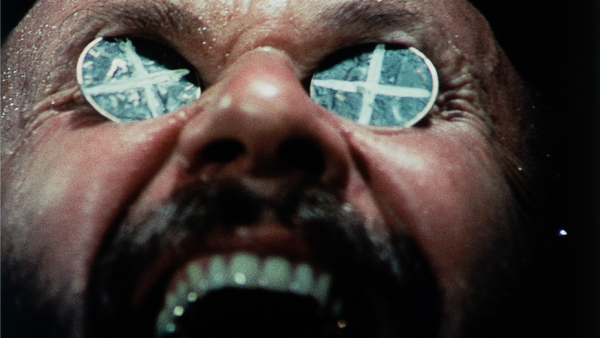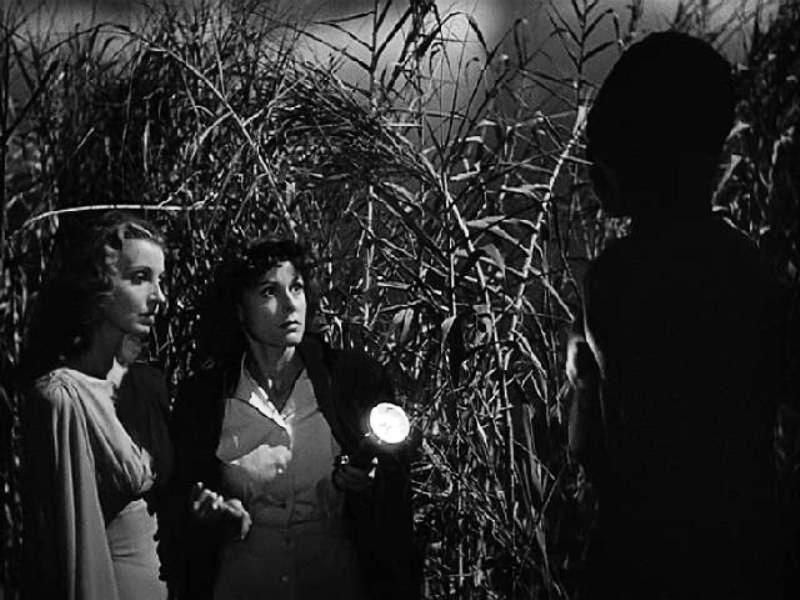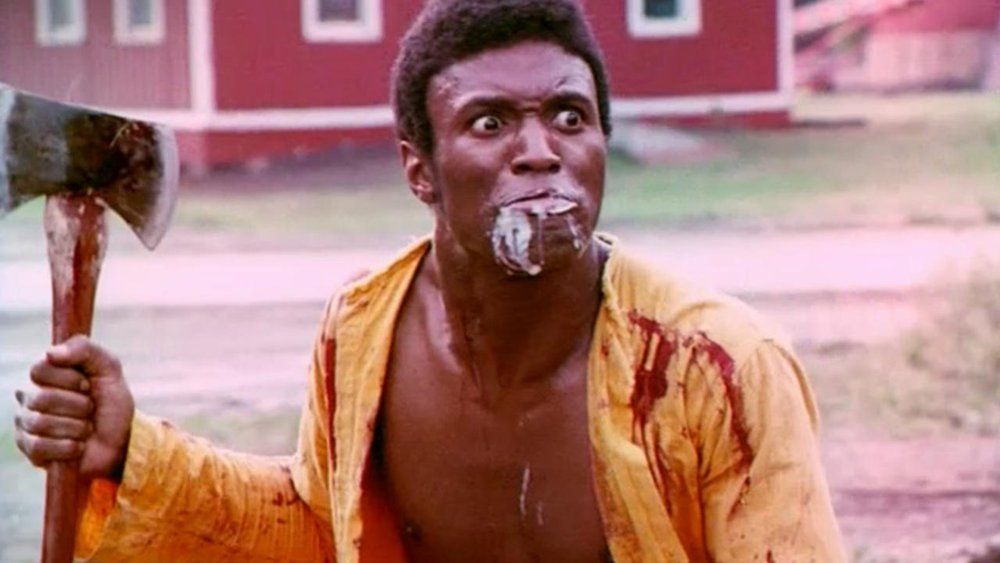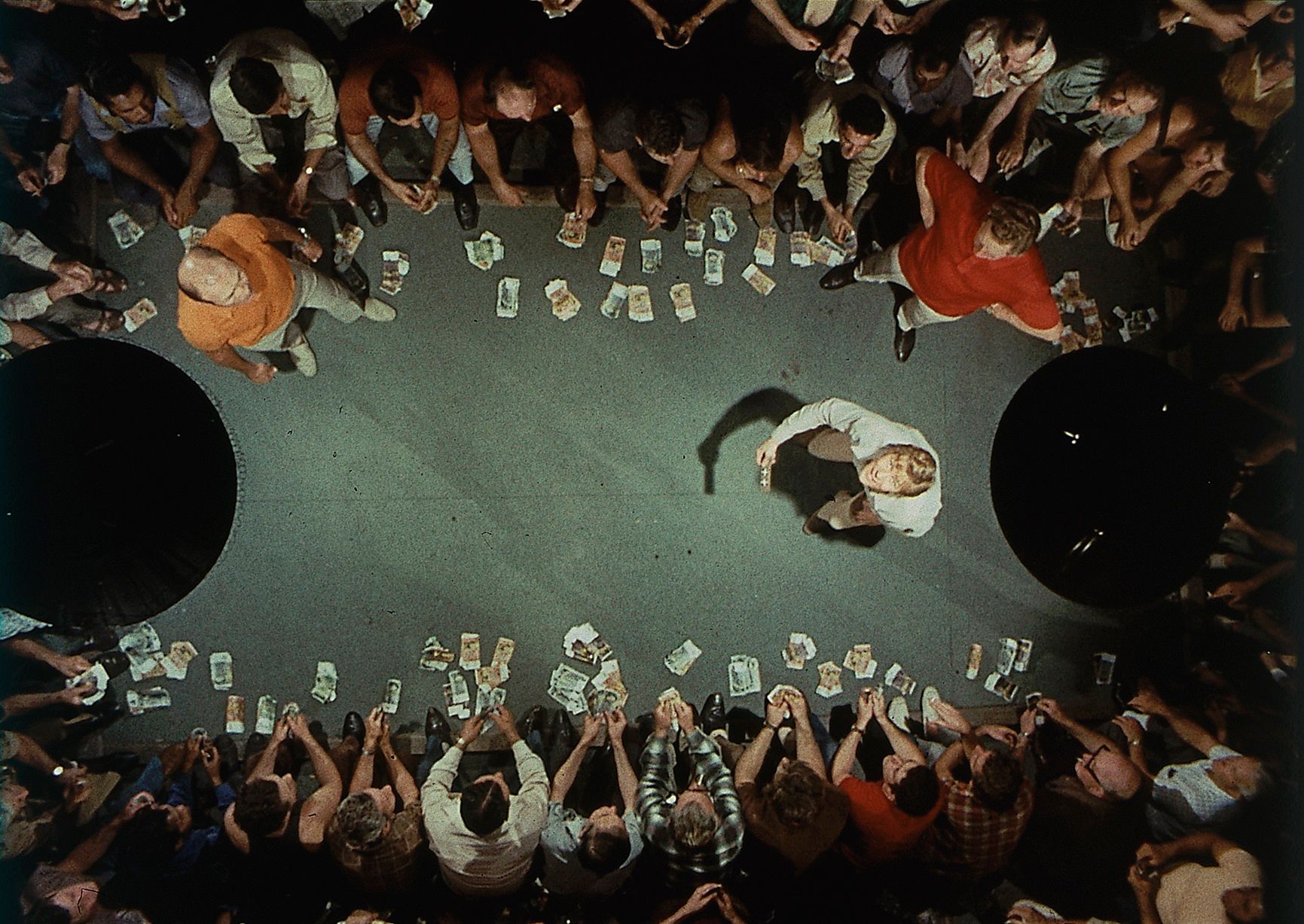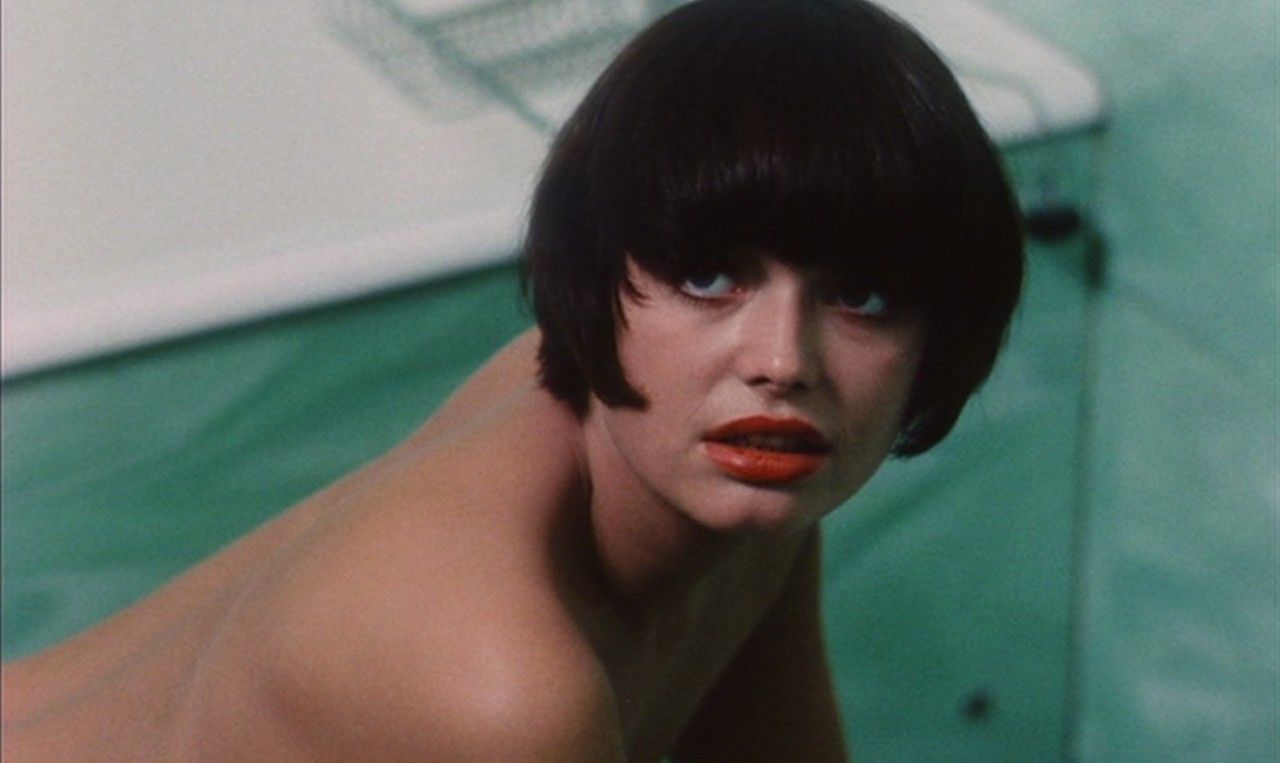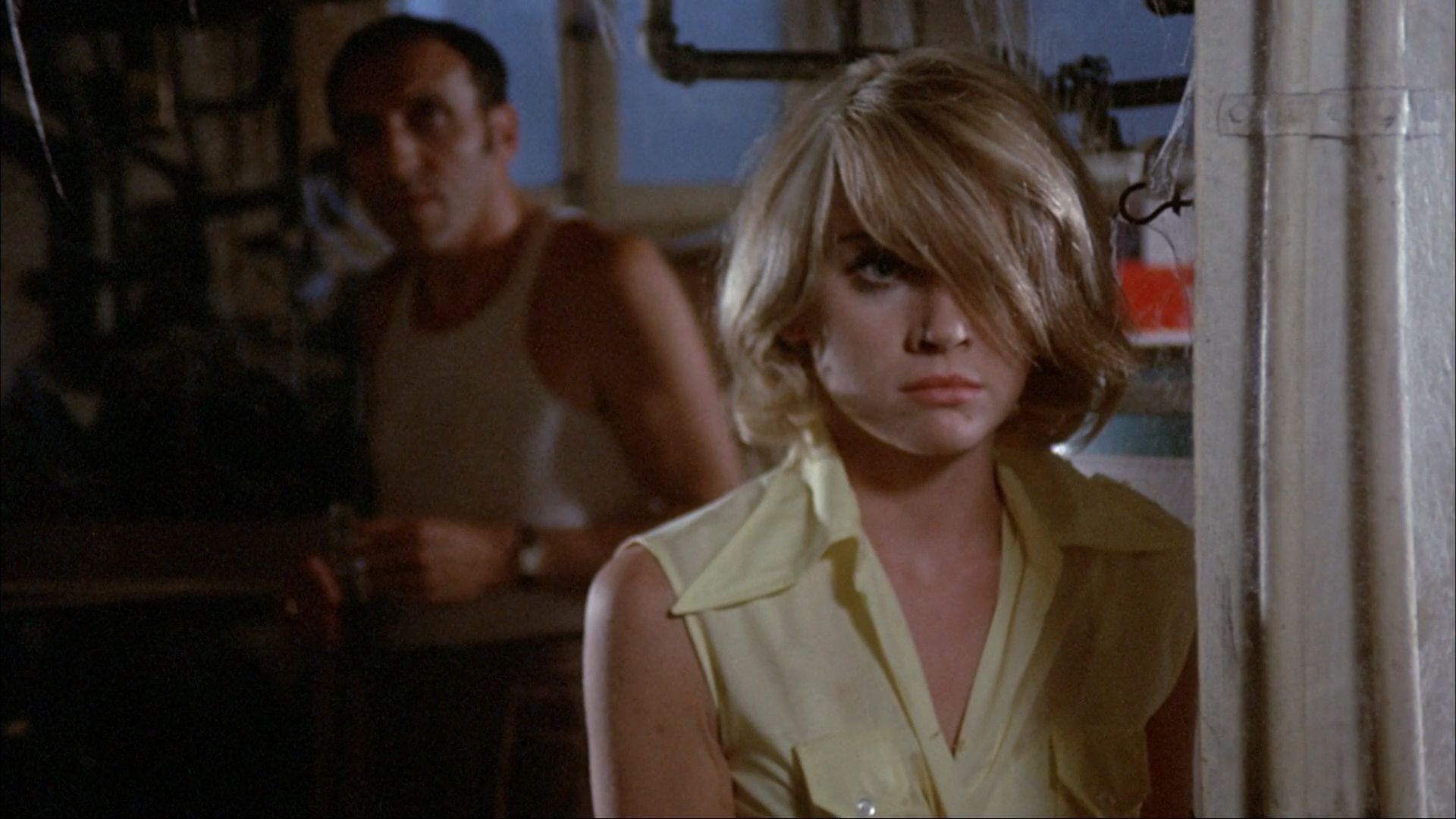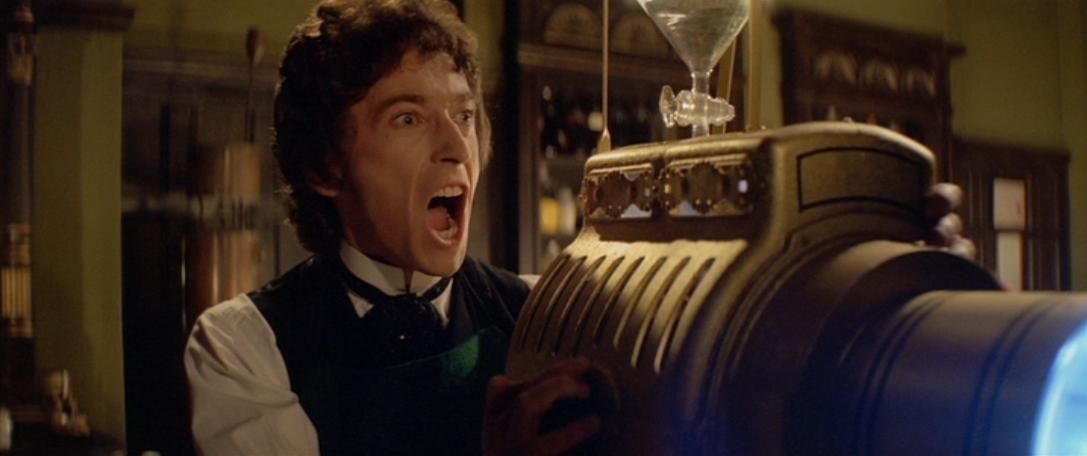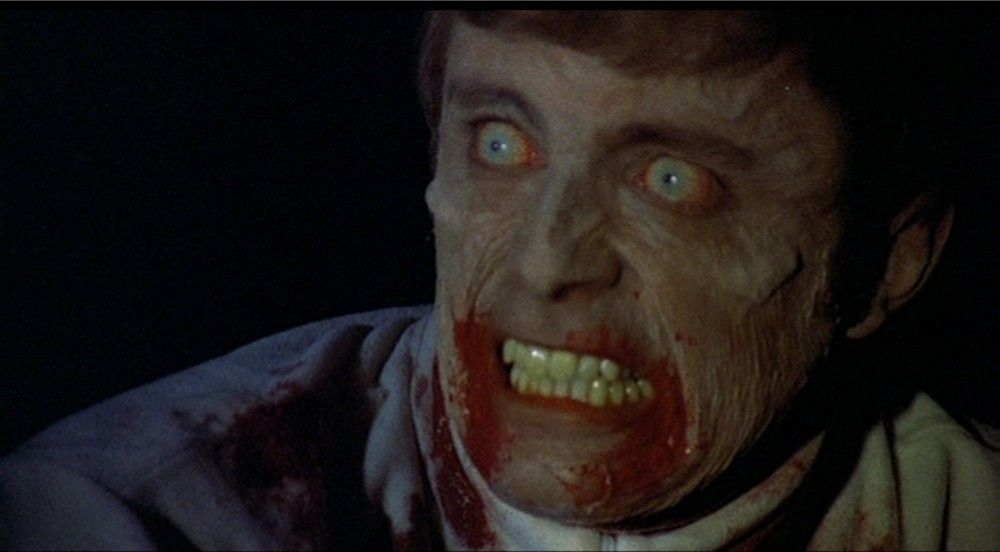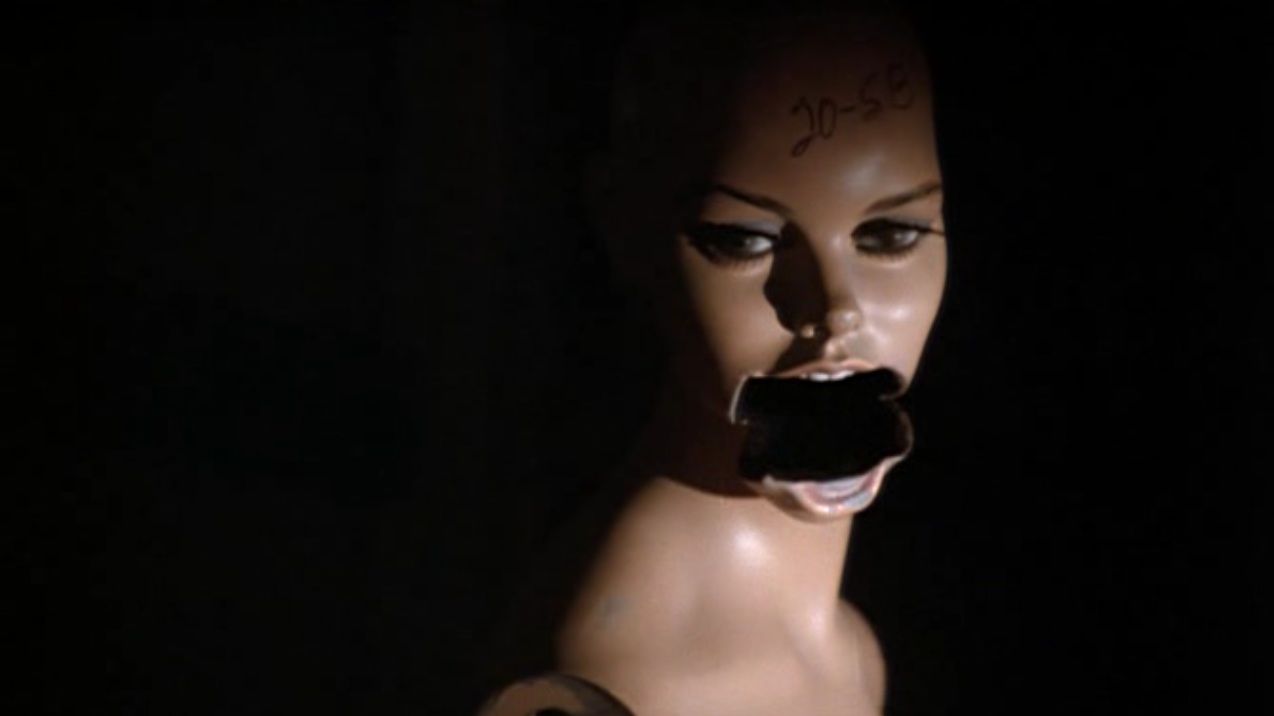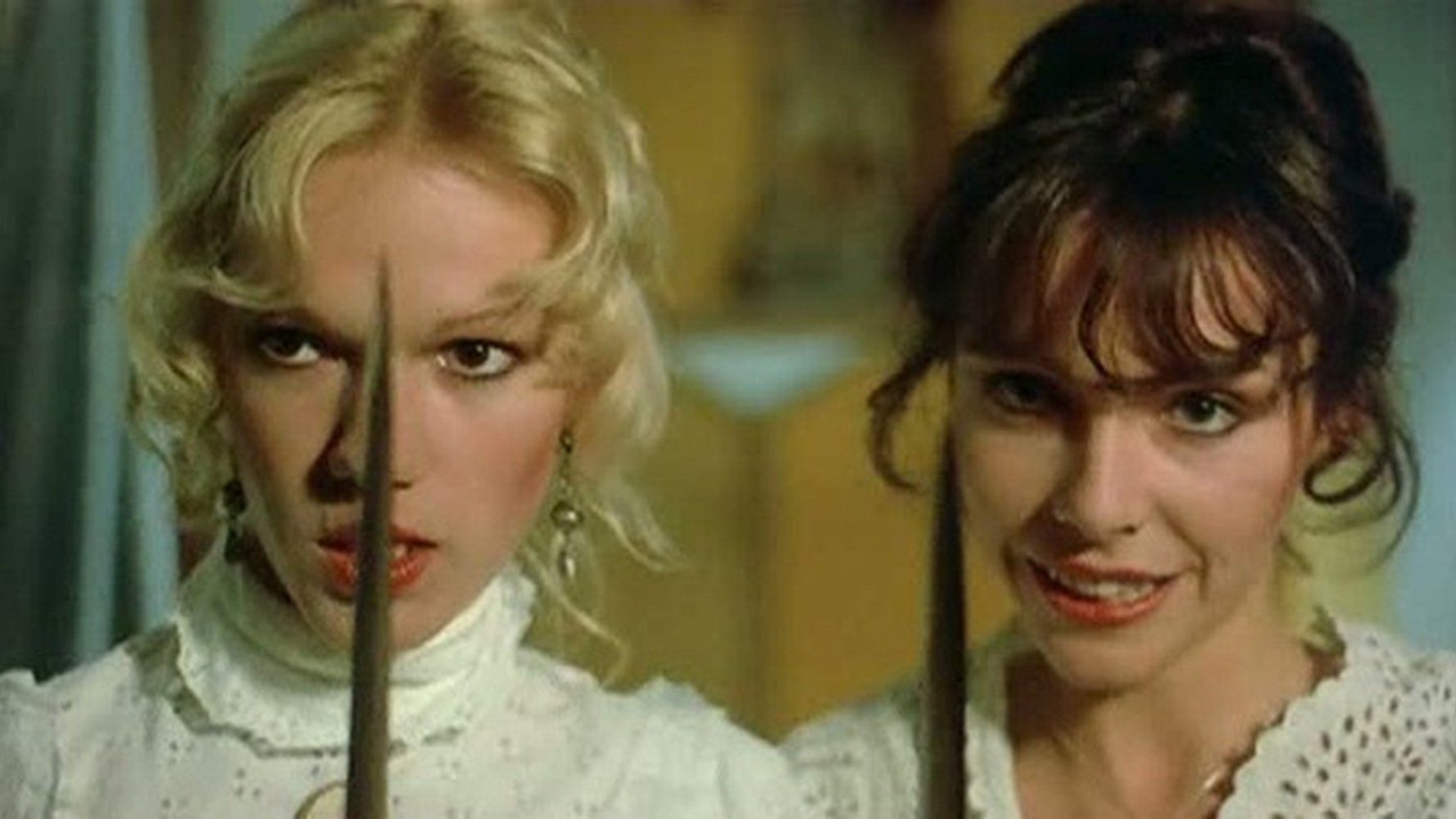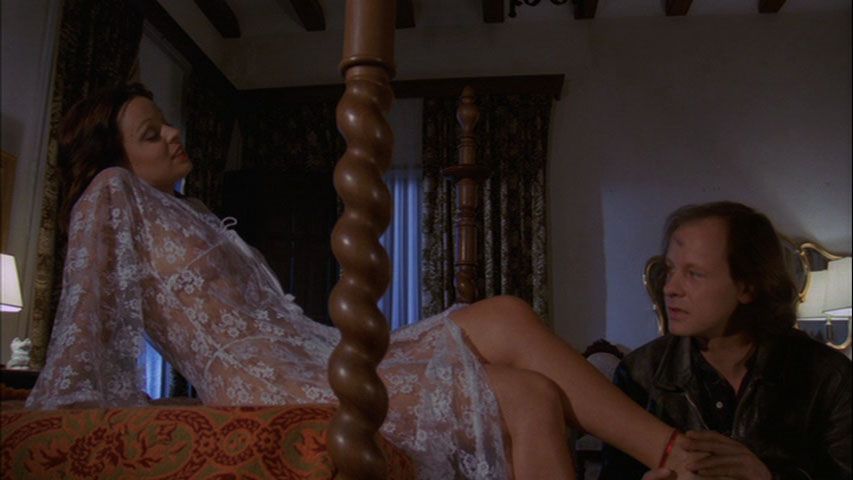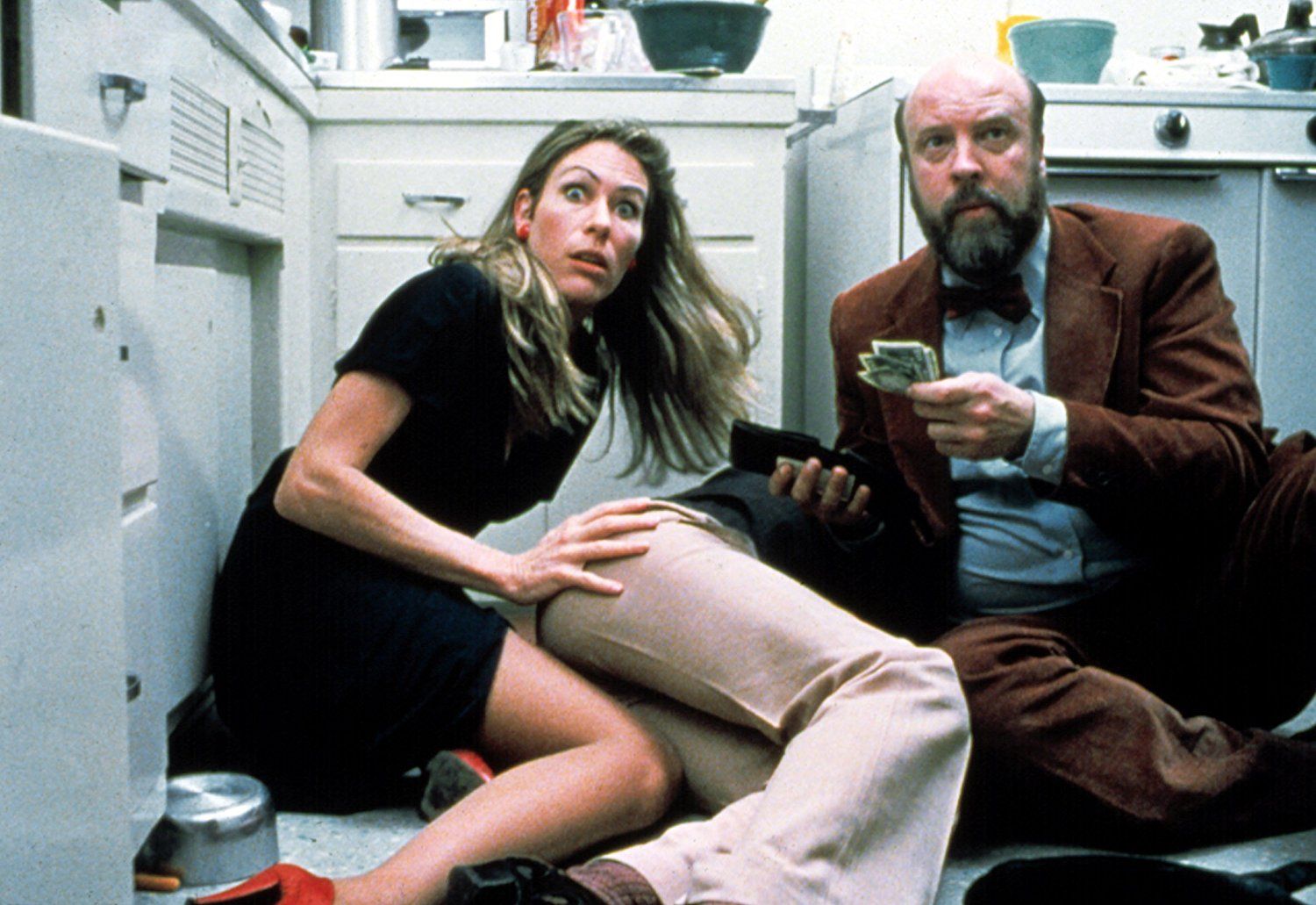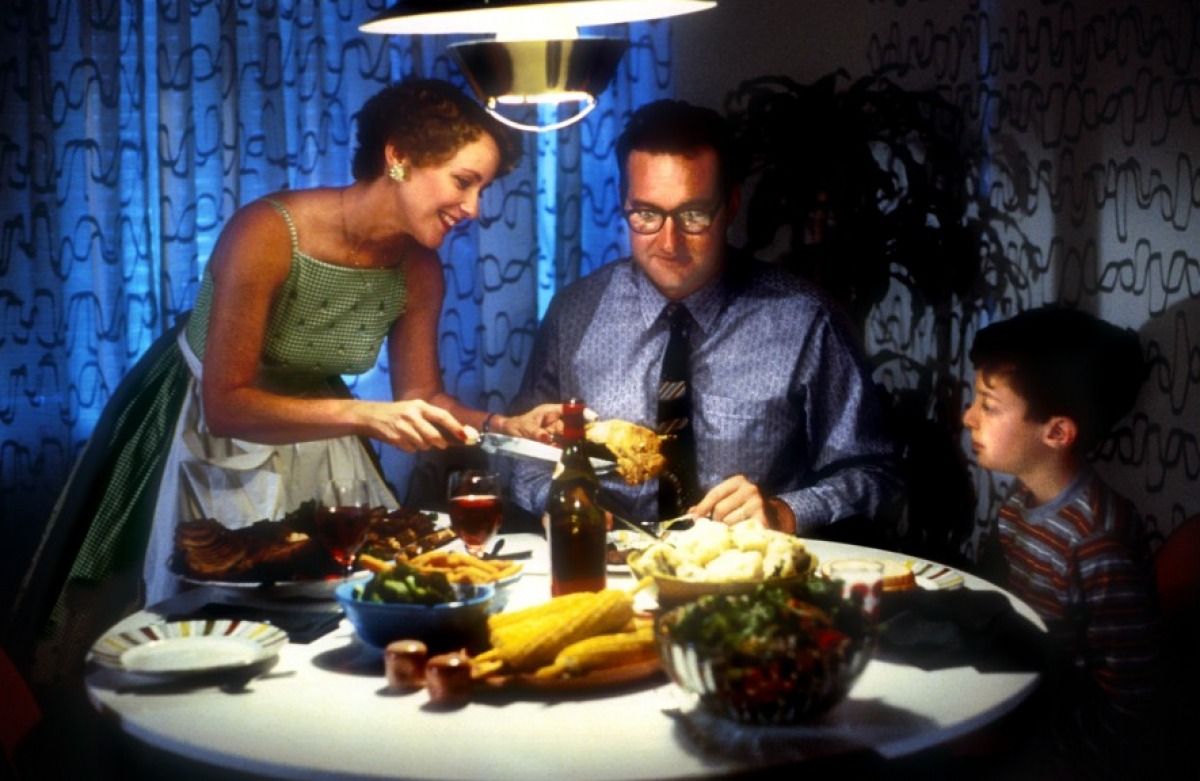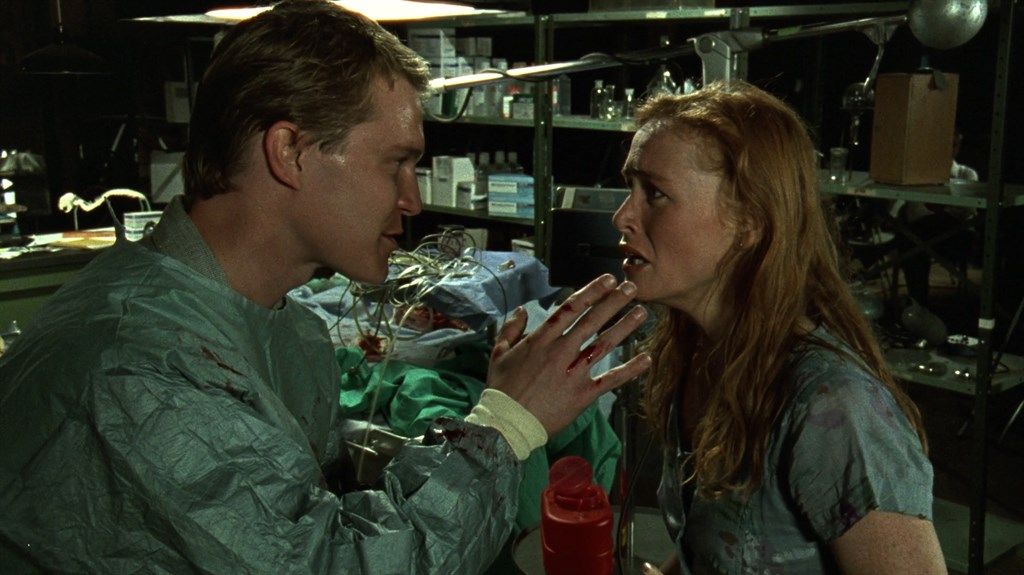Here's the thing about horror movies; there's a whole heck of a lot of them. Ever since Hollywood discovered that horror movies are cheap to produce and often reap their budget back in spades, the horror genre has an underappreciated backbone of the filmmaking industry, both studio and independent films alike. That's great news for horror fans! We get new movies all the time. But it also means that a lot of hidden gems fly under the radar.
With that in mind, Brian Formo and I have put together a list of some our favorite forgotten horror movies in the spirit of our running "Best Movies that Time Forgot" series. In the past, we've tackled the subject by decades, but with Halloween on the horizon, we wanted to hone in on the genre to celebrate some of the best horror movies that just don't get enough credit. Are they all they all great films? No. Here's the other thing about horror; it's built on a base of diehard fans who've done a pretty spectacular job of making sure the best of the best films have a long shelf life. But that doesn't mean there aren't some delights that have gone unnoticed over the years.
A bit about our methodology: I started this series of articles with the simple aim of highlighting some of my favorite 90s movies that don't get talked about enough, but since then Brian's evolved it into a better set of criteria. Namely, the films in question had to receive less than 10,000 votes on IMDB -- an imperfect measurement, but a keen determination of whether or not a film has been left behind in the zeitgeist. And while we didn't explicitly rule out films past a certain date, you won't find any movies from the last decade or two. It just seems a bit early to decide whether time has forgotten them or not. (If you're curious, I left out Resolution and Jug Face because they haven't had enough time to become cult classics yet.)
It's always fascinating to see the themes that pop up on these lists -- what stays popular and what gets left behind, and while the picks below demonstrate a noticeable trend that the trashier movies seem to be forgotten (or maybe those are just our favorite forgotten movies), the most interesting throughline was the prevalence of 70s films. It's not surprising; the 1970s was a revolutionary decade in cinema, replete with horror's most iconic films, but it is interesting how many of our selections, picked without knowledge of the other's choices, came from that decade.
Without further ado, let's get down to our picks. When it comes to underrated horror movies, it's is long and varied menu and this is by no means an all-inclusive list, but you'll find a fun selection of our favorites. And in the interest of turning fellow horror fans onto a movie they might have missed, be sure to sound off in the comments with your favorite forgotten horror films.
I Walked with a Zombie (1943)
RKO Pictures’ horror films had three mandates: runtimes would be less than 80 minutes, the budgets would be under $150,000, and the studio would choose a title, and the director would go make that movie. Jacques Tourneur’s I Walked with a Zombie certainly has that titular line, but it’s followed by a giggle in narration—because the resulting movie is not really about zombies, it’s about guilt from colonialism. The “zombie” is a sleepwalking woman on an island that practices voodoo; the family of colonialists believe she’s been put under a spell by the natives due to their family history—but that’s a continual denial that their family history could disillusion their very family.
The horror tropes are shadows, drums, and pounding flames surrounding a lengthy séance and Tourneur is delicate with the voodoo filming, not making the natives out to be monsters but choosing long respectful takes of the ceremony. The resulting film is great and though it makes fantastic use of shadows, you might giggle too if you turned this into RKO saying, "here’s your zombie movie!" Because Tourneur’s film has more in common with the works of the Bronte Sisters and gothic romance than anything RKO would’ve thought they commissioned. It’s pure art. Makes you wonder what type of great films filmmakers could make now if studios were that hands off and just wanted a title for a movie poster. — Brian Formo
I Drink Your Blood (1970)
I Drink Your Blood is peak grindhouse; pure exploitation designed to titillate, frighten, and amuse with little regard for production value, character development, and the other technical elements that tend to make up a "good movie". That said, it's purely, blissfully amusing from start to finish and a bit more cleverly plotted than you might expect.
Nobody actually drinks blood in I Drink Your Blood -- though it made for one of the best-titled double billings, released alongside the inferior but still entertaining tribal zombie pic, I Eat Your Skin. But don't let that disappoint you because I Drink Your Blood is an acid trip freakout of film about a rabies-infected cult of devil-worshipping hippies. Yeah, it's a blast.
When the Satan-loving ne'er-do-wells roll into town, they brutalize a young woman, incurring the wrath of her grandfather. Naturally, they feed him drugs and rough him up, inspiring his grandson to feed the lot a batch of rabies-laced meat pies. From there, I Drink Your Blood becomes a trippy, thoughtless zombie movie (openly riffing on Night of the Living Dead) as the horde tears their way through town, foaming at the mouth and terrified of water, of all things. It's those kinds of details that make the film such a rollicking, raucous piece of Grindhouse entertainment. You have to imagine director David E. Durston knew audiences would get a kick out of zombies being thwarted by a hose. My personal favorite moment? A man picks up a chair as his last line of defense, only to have it immediately snatched from his hands as on off-screen voice growls "Gimme that chair, you don't need that!" Ridiculous.
Fair warning, I Drink Your Blood features some unfortunate animal cruelty; one of the ugliest trends that pops up in exploitation films. They kill a chicken and some rats on screen, and drag around a dead goat. It's not as bad as some of the other films in the era (looking at you, cannibal movies), but it's still hard to watch. But if you can look at that element through the historical lens of bad behavior from an era gone by, I Drink Your Blood is a sleazy, silly Grindhouse classic. -- Haleigh Foutch
Wake in Fright (1971)
Wake in Fright is my personal nightmare: being surrounded by a horde of degenerate men who drink, gamble, fight, dismiss women, and shoot animals for sport, with no ability to leave them behind. It’s under-seen because it includes footage from an actual kangaroo hunt, and though this movie assisted with making kangaroo hunting illegal in Australia, it should be warned that it’s real and it’s disturbing. But if you can stomach knowing that’s coming, Wake in Fright is a massively recommendable film if you’ve ever thought that The Hangover could be pretty interested as a horror concept instead of a comedic set-up. This one follows a schoolteacher (Gary Bond) who takes a rural post in Australia and immediately regrets it. After gambling away all his earnings in an attempt to get back to Sydney, he shacks up with the alpha male (Donald Pleasence) for a weekend of non-stop boozing, fighting, and fucking.
Though having some similar ruralism views, Wake in Fright is more frightening than Deliverance because these outback men are more identifiable to a larger population. They raise hell because there don’t seem to be any repercussions for boys behind badly. It's also quite lovely to look at, most of the time. The orange desert expanse is lensed beautifully and the kangaroo hunt is vomitus. Pleasaence is quite horrifying as an educated brute that’s chosen nihilism and chaos and pushes the teacher to the brink. Wake in Fright is about men entrapping other men through heightened masculinity.
Wake in Fright premiered at Cannes but the print was lost for 30 years. And the negative traits of men in groups making the worst choices over and over are timeless. Director Ted Kotcheff made his debut with Fright and he went on to make hulkier anthems with Sylvester Stallone (First Blood) and Arnold Schwarzenegger (Commando), but this is his masterpiece of identifiable and horrific masculinity that likely everyone has encountered on some scale. The main character here can't seem to leave it, even though he tries. It's like he's in a sand globe.
Kotcheff later made Weekend at Bernie's. And even though they're hanging out with a dead guy, I'd rather kick it with those dudes than these. — Brian Formo
Daughters of Darkness (1971)
With nudity and sexual proclivity loosened across the first world’s various censor boards, the vampire film finally got to embrace the eroticism of the genre in the 1970s. For the past few decades there have been many sex films involving the vampire; Belgium’s Daughters of Darkness is the most artful and moody of the spicy lot. There’s a flower-eating “mother”, a mysterious man on a bicycle, and an ornate Transylvanian hotel where a Countess (Delphine Seyrig, known to cinephiles as the indomitable Jeanne Dielman) and her assistant (Andrea Rau) lament that their world hardly has any remaining virgins, and thus the Countess’ ritual of bathing in the blood of 800 virgins for her healthy sheen, is beginning to wane.
Enter a newlywed couple who’ve already fallen out of love with each other (she is Swedish, and thus not of “good blood”, which is hardly a concern of a vampire) and are thirsty to explore other lovers. This liberating combination makes the hotel a feeding ground for sexual exploration, feastings, and a killer soundtrack.
Harry Kümel’s film is grindhouse fare for those who prefer a touch of class. And Seyrig, a veteran of international arthouse films for Alain Resnais and Chantal Ackerman, provides one of the classiest femme vampires, while Rau is one of the most alluring—particularly when her silky seduction movements perfectly compliment the serenely surprising trap-door score. — Brian Formo
Blood and Lace (1971)
Seven years prior to Halloween, Blood and Lace featured the first home invasion killer POV during a murder. The hammer murder of a prostitute at the beginning sends her teenage daughter (Melody Patterson) to an oppressive orphanage run by the sadistic Gloria Grahame (all of the great 40s divas eventually made their way to cheap horrors at the twilight of their career), who lives off the state contract given for each orphan and works the children extra hard or punishes them even harder.
Every man in Blood and Lace is oozing filth as they all try to get their hands on the new teen, who talks a big game about her experience with love. That includes Uncle Leo (Len Lesser) from Seinfeld, and leads to a few sick plot twists, and Oscar-winner Grahame pays a pittance for her personal life that excommunicated her from Hollywood—for sleeping with/marrying her teenaged stepson—in a grindhouse movie that would embrace that ickiness.
Is this movie great? Nope. But for cheap thrills and grindhouse fans, it’s certainly very fun. It perfectly straddles the 60s exploitation flicks of yore and has one foot in the future 70s horror nasties. You WOULD NOT want to be the final girl in this sick scenario. — Brian Formo
The Asphyx (1972)
The Asphyx is slow-burn Victorian horror, which usually falls well outside my range of interests, but what it demands in patience, it makes up for in a purely original story that somehow hasn't been replicated since. The title refers to an ancient creature that comes to claim your soul at the moment of death, and the film centers around Sir Hugo Cunningham (Robert Stephens), a fancypants high society doctor who begins experimenting with the creature; first by capturing its image, and ultimately trying to capture the entity itself in a dangerous quest for immortality.
The film's plotting stumbles into the absurd at moments -- for example. the number of bizarre ways they come up with to make Cunningham's experiment go wrong -- but it thrives when it digs into the meat of its concept. The creature design for the Asphyx itself is unique and chilling; a blue-tinged specter wholly different from the more conventional creature creations that plague uninspired monster movies, but the best moments come when the scientists debate the meaning of the creature's existence. These conversations are ponderous and explored at length, giving time to explore unanswerable questions of mortality. It all makes for a film that creeps up on you. The Asphyx comes collecting, taking its time, but it ultimately demands your soul... or at least a deep consideration of your own impending death. -- Haleigh Foutch
Deathdream (1974)
Deathdream (aka Dead of Night) is one of the first narrative films to directly address the Vietnam War. In it, a soldier (Richard Backus) returns home from Vietnam after his parents (John Marley and Lynn Carlin) had already received a letter from the army stating that he was killed in combat. The logline for Bob Clark's (Black Christmas, Porky's) second feature labels the man a zombie, but he returns addicted to blood and kills animals and locals so that he can inject blood into his veins and keep living. Needing blood like clockwork in order to keep living? Sounds a little bit like a vampire, too.
Deathdream uses the horrific symbol of intravenous addiction to approach the issues of an American soldier returning home. Many soldiers became addicted to drugs during Vietnam, or in the veteran's hospital or upon their return. Sometimes just for coping with what they'd seen, sometimes for coping with how they'd been received at home. Backus' sullen detachment from his parents and his surroundings —coupled with his need to inject blood in order to keep being human—is a haunting allusion to the veteran drug-abuse problems the country turned away from ever since Vietnam. — Brian Formo
Tourist Trap (1979)
Alternately goofy as hell and downright creepy, Tourist Trap is one of the more bizarre slasher films to come out of the pre-80s onslaught, somehow managing to be unique despite borrowing heavily from the horror hits that preceded it. The film follows a fairly standard set of slasher victims; a group of youths who get stranded at remote gas station/museum filled with grotesque mannequins, which happens to be run by a creepy, murderous man who stalks them down one-by-one.
That may all sound a bit par for the course, but Tourist Trap really earns its stripes when it gets going, exploring the grotesque displays of the creepy curation -- especially when the mannequins come to life. By and large, Tourist Trap sets aside gore and overt violence in favor of building creepy ambiance, and while that slow-burn approach can make the film's mere 90 minutes drag at points, director David Schmoeller creates a cacophonous mounting dread and pays it off with unnerving imagery. The end result may be too tame and tongue in cheek for some horror fans, but if it presses your particular buttons, it presses them very well. -- Haleigh Foutch
Fascination (1979)
What if Eric Rohmer made a bisexual vampire movie? Well, it'd be an immoral tale such as Fascination. Of all the lesbian/bisexual vampire movies of the 70s this is the one that puts women in the most control over their sex and their prey. It’s not just a few women cooped up in a mansion, it’s a whole underground society. Fascination opens with a robbery that’s filmed liked grown ups playing the same shootout games that they did as kids. The wounded man stumbles in upon a woman’s home and though the man’s stunted and playing the same games he did as a child, these women have graduated to a whole different kind of tea party.
If Jess Franco is a little too tongue in cheek and psychedelic for you, then give Jean Rollin a try. Start with Fascination. — Brian Formo
Bloody Moon (1981)
Jess Franco is most famous for Vampyros Lesbos and his modern swingin’ Euro adaptations of Marquise de Sade’s sadistic seductions—but Bloody Moon is his most straightforward horror film. There’s a killer on the loose at a Spanish schoolhouse, five years after a rape and murder at a party. And because it’s Franco, there’s also some body disfigurement and incest. The script is pretty ludicrous and the acting is pretty bad, but it never aims much higher than trashy kills and pearl-clutching plot mentions which is Franco’s sweet spot. It’s the perfect midnight movie for your fucked up friends—if you can handle a slasher that’s centered around a killer trying to get back with his older sister, then you’ll howl with glee at this Bloody Moon. — Brian Formo
Eating Raoul (1982)
There's a certain subset of cinephile culture that has deemed Eating Raoul a classic -- heck, it even earned a spot in the Criterion Collection. And I don't disagree with them. But despite the love from movie diehards, the horror comedy has remained a woefully underappreciated genre gem. To be sure, Eating Raoul skews further in the direction of comedy than horror (a fine counterpart to the twisted terrors of Parents, which you'll find below), and the movie is light on gore, but it's a pitch-perfect entry in the horror comedy lineage that hinges on the tropes of terror to land the punchline.
The film centers on a prudish, condescending married couple, appropriately named The Blands (Paul Bartel and Mary Woronov), who decide to take matters into their own hands when their lifestyle is cramped by the swingers and partygoers flooding their complex. When one of the unseemly bunch gets too aggressive with the lady of the house, the Blands get to murdering and it sets off an unhinged chain of events that culminates in a human feast.
Eating Raoul is hilarious, but it plays most of the humor subtly, and under Bartel's direction, the violence gets the same treatment. In fact, most of the film plays out in deadpan, demanding the audience keep up with the visual gags and slyly delivered quips, with violence doled out in quick, unblinking spurts. A slick satire with plenty to say about capitalism and the comforts of suburbia, Eating Raoul will tickle your funny bone... just before it carves your arm and sells it for dog meat. -- Haleigh Foutch
Parents (1989)
Parents did not fare well when landed in theaters back in 1989, receiving so-so reviews and bombing at the box office. Thankfully, time has been kinder to Bob Balaban's dark cannibal comedy. For years, the film was shuffled around on DVD double features and horror collections, but in the meantime, it became a cult classic and finally got a Blu-ray release early this year. Hopefully, that means Parents will get a boost in popularity because the twisted satire juxtaposes suburban 1950s Americana and macabre flesh-eating violence to distinctly delightful results.
Parents stars Bryan Madorsky as Michael Laemle, a young boy terrorized by nightmares of blood and meat who suspects his idyllic suburban parents -- played with delirious menace by Randy Quaid and Mary Beth Hurt -- are serving him unsavory sustenance; his daily sweetbreads, if you will. And he's right, because his parents are a pair of stone-cold psychos with a hunger for human flesh and a regular supply of fres flesh.
Balaban directs Parents with a meat cleaver, carving out a mean slice of comedy in the midst of dark and deranged horrors. When concerned school officials interfere, Parents swells into a symphony of clashing tones. It's a fucked in the head horror comedy that turns the domestic realm of safety upside down to equally hilarious and heinous results. -- Haleigh Foutch
No Telling (1991)
No Telling essentially answers the question, what if PETA made a Frankenstein movie? But it’s so much more that that. Sure there’s the ethical question about whether lab experiments on animals is actually okay—as long as it leads to beneficial medicine? But more importantly, No Telling is extremely well directed by Larry Fessenden with nice swooping camera movements that don’t trip over the shoestring budget. Fessenden also uses a stopped car on the highway to illuminate the spatial distance between a married couple before they relocate to a remotely idyllic farmstead.
So what’s the horror? The husband (Stephen Ramsey) is setting up traps to catch wild animals to test a serum on and his company is totally fine with it as long as word doesn’t get out (thus the move to the middle of nowhere). But then he starts abducting beloved pets. Ultimately, though animals are being sewn together and brought back to life, the true horror of No Telling are the secrets in a marriage; chiefly, could we still love each other if we knew where the money was really coming from? Throw in some femme forward dinner table conversations about the pissing matches between men and you’ve got a nicely made extremely low budget horror film that’s very much a product of the 90s. — Brian Formo

